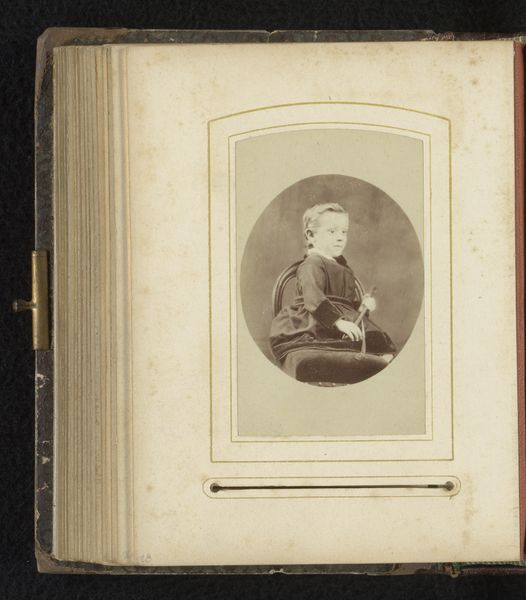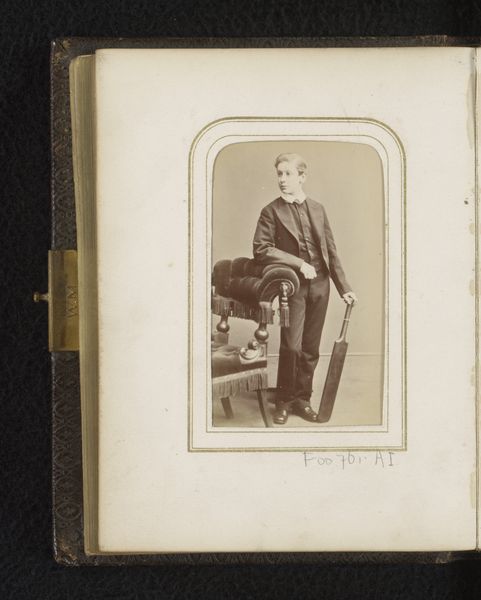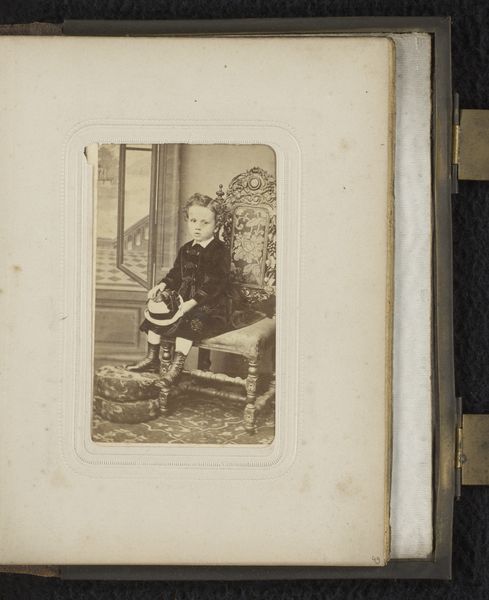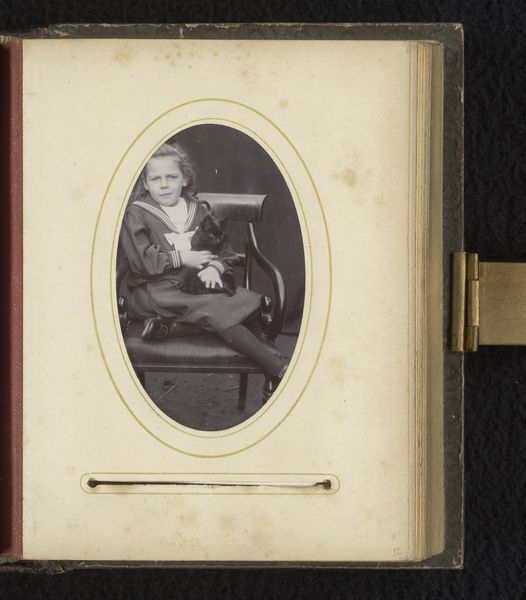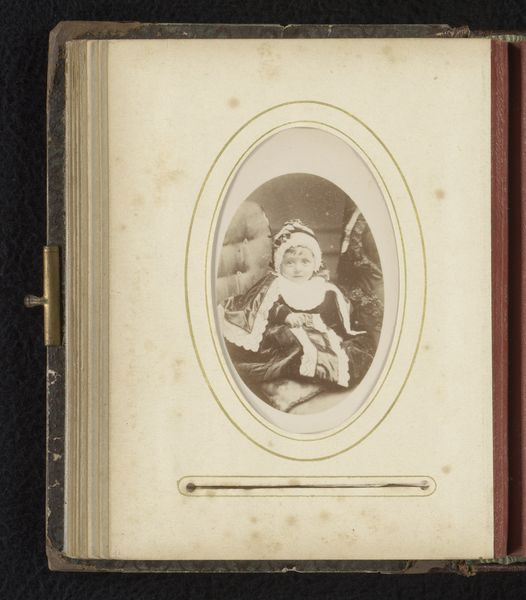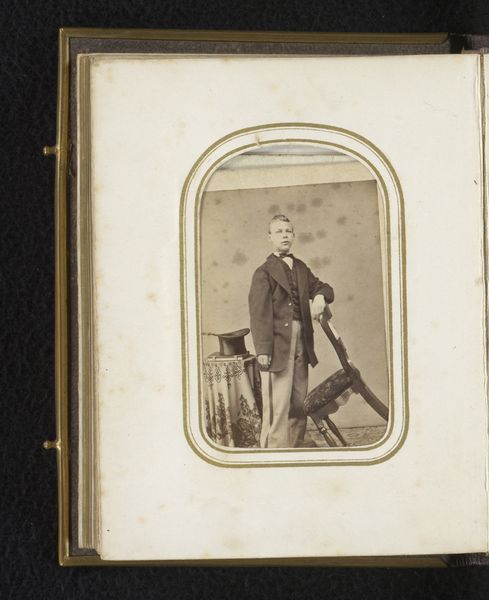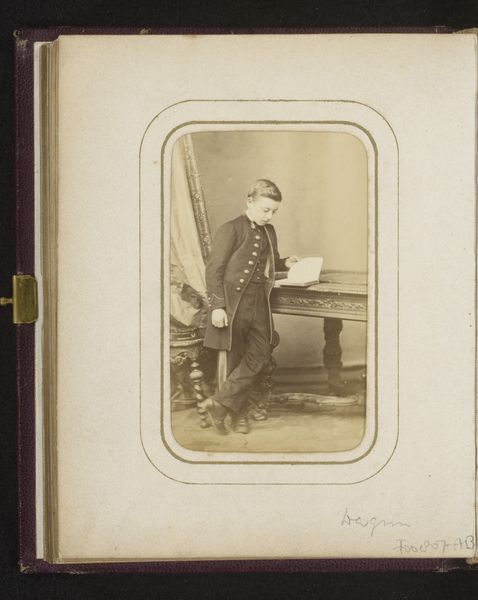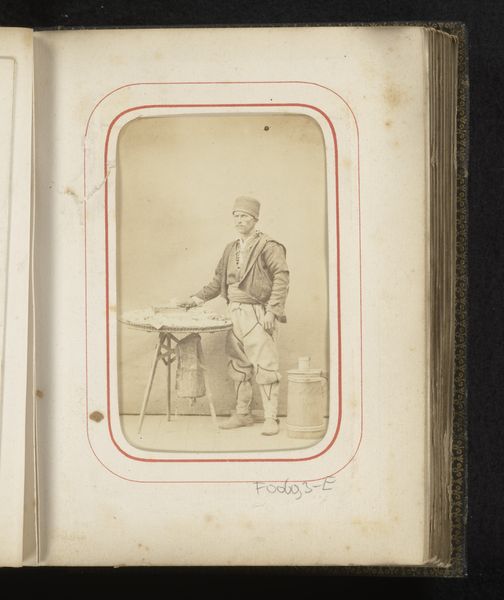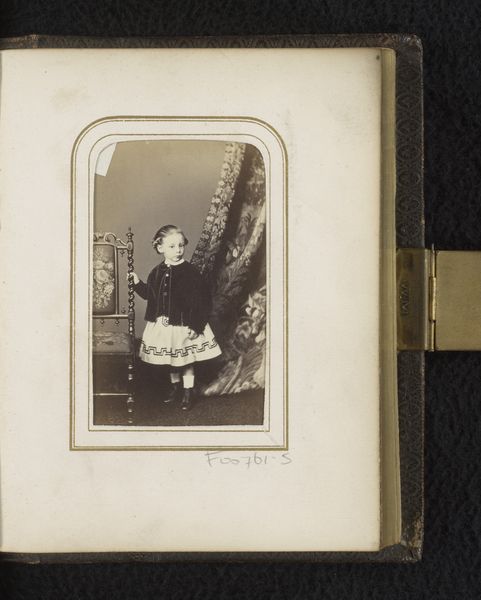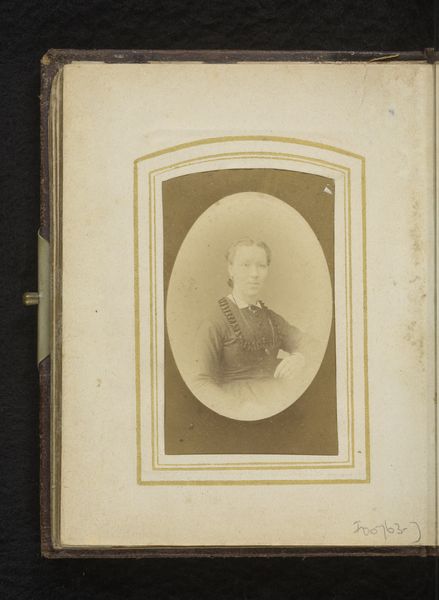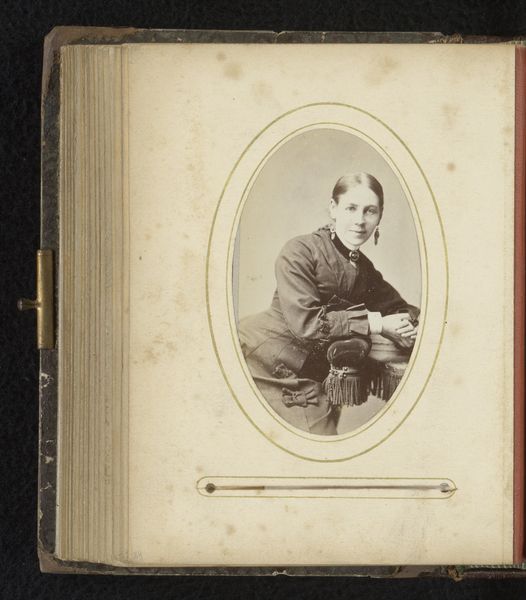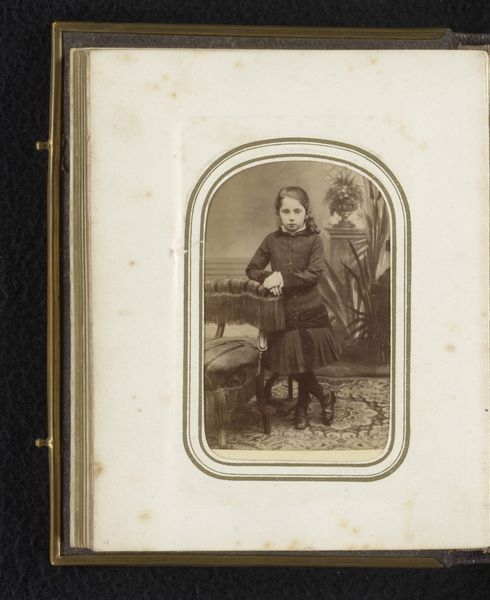
photography, gelatin-silver-print
#
portrait
#
photography
#
gelatin-silver-print
#
genre-painting
Dimensions: height 105 mm, width 64 mm
Copyright: Rijks Museum: Open Domain
Editor: Here we have Elias Gottheil's "Portrait of a Girl by a Chair," likely a gelatin-silver print created sometime between 1863 and 1883. It’s a small photograph, quite sepia-toned, and the girl has a remarkably composed expression. What can you tell us about how society at the time might have viewed this image? Curator: It's crucial to remember that portrait photography in the late 19th century was still quite novel, particularly outside major urban centers. Such a carefully staged and printed photograph signifies a rising middle class eager to participate in visualizing and solidifying their status. Do you notice the formality of her pose? Editor: I do. She looks almost uncomfortably proper leaning on the chair, but eager to please the camera. Curator: Exactly! It highlights photography’s burgeoning social function, demonstrating a self-conscious performance for the gaze of future generations. This wasn't just documentation, but active image crafting. The stiff pose wasn’t just because of technical constraints. It speaks to very specific aspirations and societal roles, where families sought to record and shape the legacy of their children. Who had access to cameras at the time? Editor: It makes me think about access and representation – the families who had the resources to commission these photos, controlling how they'd be seen and remembered. How did images such as this one spread more widely to become social images? Curator: The accessibility of photography gradually trickled down, yet even when cameras became smaller and more readily available, photographic skills and materials maintained a cost that separated classes. Did access to this medium challenge conventional modes of representing sitters such as paintings and sculpture? Editor: It’s like a tiny time capsule, a glimpse into the Victorian era's values and how people wanted to be perceived. Thanks, that was really insightful. Curator: A useful consideration is also the relationship between painting and photography at this time. Thank you!
Comments
No comments
Be the first to comment and join the conversation on the ultimate creative platform.
